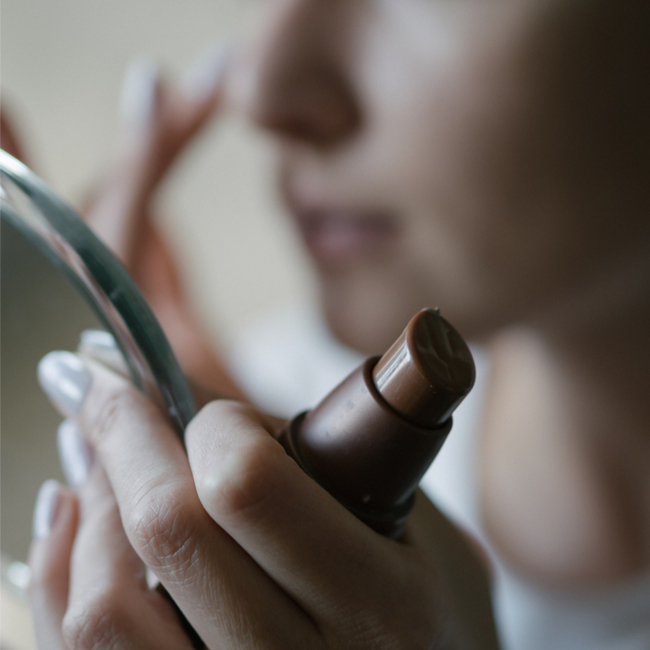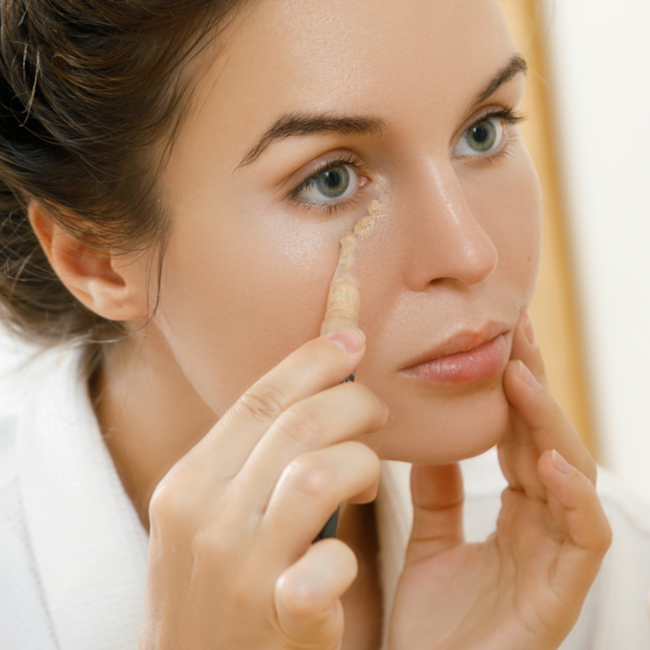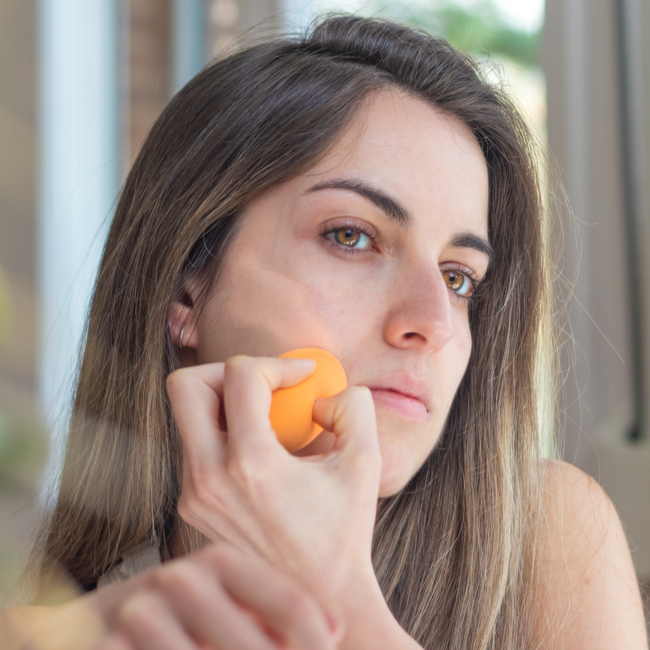This article has been updated since its initial publish date to include more expert insight.
From patchy skin to the wrong concealer color, there are many reasons why it might feel difficult for mature beauties to cover up dark spots and crow’s feet. Another issue many run into is creasing, and concealer that isn’t durable and consistent when you need it to be.
We checked in with professional makeup artists Natasha Moor and Vivi Mintara for a no-fail, go-to set of steps and tips to follow to conceal any imperfections in no time!
Read on for suggestions and advice as well as things to keep in mind when prepping your skin, blending and ultimately, how to keep your work of art lasting all day without smudging.


Step #1— Prime & Prep Your Skin
For the first (and perhaps most essential step), you want to make sure that your skin is cleansed, moisturized, and primed before applying any makeup, Mintara says.
"Not only will this fill in any fine lines and wrinkles, but it also encourages concealing products to stick to your skin in an even and long-lasting manner," she notes. "With primer, your concealer will last for at least eight hours without the need for a touch-up," she adds.

When it comes to selecting a color for your skin tone, Mintara says to avoid using concealers that are too light. "If you are putting concealer on dark spots and areas you want to cover up, you should avoid using concealers that have lightening or highlighting effects," she says.
This, Mintara explains, is because these types of products are "designed to draw attention to specific areas of your face, which you may not want if you have dark spots."
With that said, she deems it best to use "illuminating concealers after you have first put on a base concealer that matches your skin tone and fully covers the dark spots."

#2— Add a Thin Layer of Concealer
In this step (whether your goal is to cover dark spots or crow's feet), Mintara stresses avoiding slathering on too much product. "When it comes to applying the concealer, start with a thin layer.
If this doesn’t fully cover the dark spots, then apply another layer, and keep building the color up," she advises. "Don’t immediately put a very thick layer of concealer on your face, because you may not need as much as you think," she says, and also this "will cause the makeup to crack after a few hours."
If you find that your concealer isn’t fully altering the appearance of dark spots, then she adds that you can use color correction underneath the concealer, and then "build your skin-tone-colored concealer on top of this." She dubs yellow and orange color correctors to be the best for dark spots.

For a beginner, the "most important step is to apply your under-eye concealer (and all of your products) with a damp makeup sponge," Moor stresses.
"I can’t emphasize enough how important it is to start with a dot or two of product and add on if needed," she adds.
A common mistake is to "select a shade of concealer that’s lighter than your skin," but that will only emphasize the product, Moor notes.
The solution? "Pick a shade that matches your skin color and press it into your skin with the damp sponge," she advises.

#3. Use a Beauty Blender Rather Than a Brush
When you are applying concealer to your skin, Mintara recommends using a mini beauty blender to blend out the product. "While brushes are great for applying makeup, they can leave tiny streaks if they aren’t used properly," she says.
Small beauty blenders can reach "difficult dark spots, and they will provide full coverage for your skin," she continues.
"I would recommend adding the smallest bit of concealer to the blender, plopping this on the dark area, and then blending the concealer outwards in a circle around the dark area," she suggests.

Overall, when you apply the concealer "right under your eyes only, it can be obvious," Moor warns. The key to a seamless look, she says, is to blend it into your cheek area.
She recommends her 'signature X technique,' which involves drawing a triangle down from your eye and blending down toward the center of your cheek with your makeup sponge. "This will help to ensure that the concealer is well blended and invisble," she concludes.
While Moor says that you can’t completely mask crow’s feet, you can "help to even out the skin tone and minimize the appearance" with concealer.


























